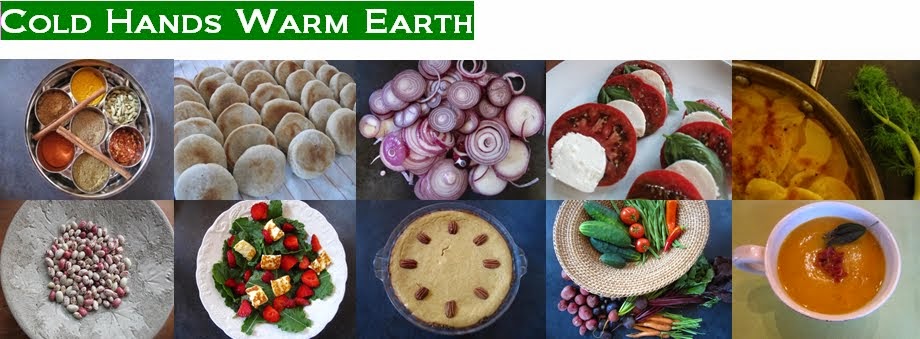Ohmergerd so delicious! The braised lamb shanks look very elegant (even with my crappy photos) but this is an incredibly simple dish to make even for inexperienced cooks. There are so many recipes for braising lamb shanks and mine is in no way
unique. So just pick one you are comfortable with and go for it. You
will not regret making this dish. The lamb can be served with just about anything including rice (a
mushroom risotto would be awesome), maybe
celery root puree or with these
borlotti beans (which are from my own garden harvested in the fall)!
After the lamb is cooked the braising liquid is reduced to make a sauce - that is the shiny glaze you can see in the pictures.
I made this over two days but it can certainly be done all at once if you have the time. It takes up to 2 hours (as well as an overnight soaking of the beans) to fully braise the lamb until it's falling off the bone and it shouldn't be rushed.
 Ingredients:
Ingredients:
1 cup borlotti beans
2 lamb shanks, 3/4-1 lb each
1 large onion, chopped
3 celery stalks, chopped
3 large carrots, chopped
1/2 can tomato paste
2 cups red wine
chicken stock (up to 1 litre)
1 large bunch fresh rosemary
1 small bunch fresh thyme
Soak the beans overnight or a minimum of 8 hours. Set aside.
Set oven to 325 degrees F.
Heat a large dutch oven on the stovetop and add 1 Tbsp olive oil. Add the lamb shanks to the pan and brown the meat - don't rush! This will caramelize the meat and add great flavour. Remove the lamb when all sides are browned and set aside.
Add another Tbsp of olive oil to the same pan, then the chopped onion, celery and carrots and cook about 10 minutes until vegetables start to soften. Add 1/2 a can of tomato paste. Stir into the vegetables and cook another 10 minutes.
Deglaze the pan with the red wine and allow to cook about 3 or 4 minutes for some of the alcohol to cook away.

Add 1 tsp each salt and pepper, the herbs, the lamb shanks and enough chicken stock to cover the meat. Bring to a boil.
Cover and put in oven. Braise 1 1/2 to 2 hours or until you see the meat easily pulling away from the bone.
And this is where I stopped but you can go ahead and serve it at this point (see further down for the sauce). Or remove the meat, allow to cool and store in foil in the fridge. Strain the remaining mixture, keeping the liquid and discarding the vegetables. The following night ...

Now that the braising liquid has been refrigerated, some of the fat will have risen to the top. Skim as much of the fat off as you can then return the liquid to a casserole dish or other oven proof dish. Add the lamb and return to the oven at 325 degrees F until heated through - probably 30-40 minutes.
Drain and rinse the beans. Place in a pot with 3-4 cups water. Add 1/2
tsp salt. Bring to a boil then simmer until beans are tender.
Sauce: Remove lamb from the oven. Take 1 cup of the remaining braising liquid (or as much as is left) and pour into a small pan. Cook on medium heat until reduced at least by half. Season with salt if needed. I also drained the beans of the cooking water when they were almost ready and returned them to the pan with some of the braising liquid for additional flavour (if you have enough liquid to do this with).
Place the beans in a shallow bowl with a lamb shank on top. Spoon some of the sauce over the lamb and into the beans.


















































